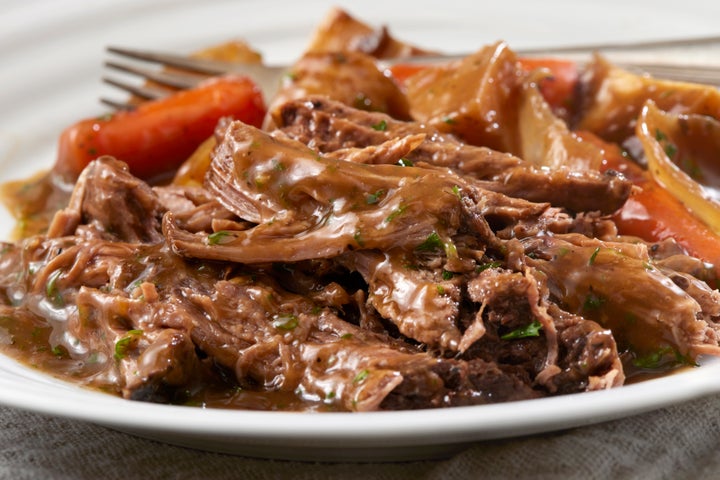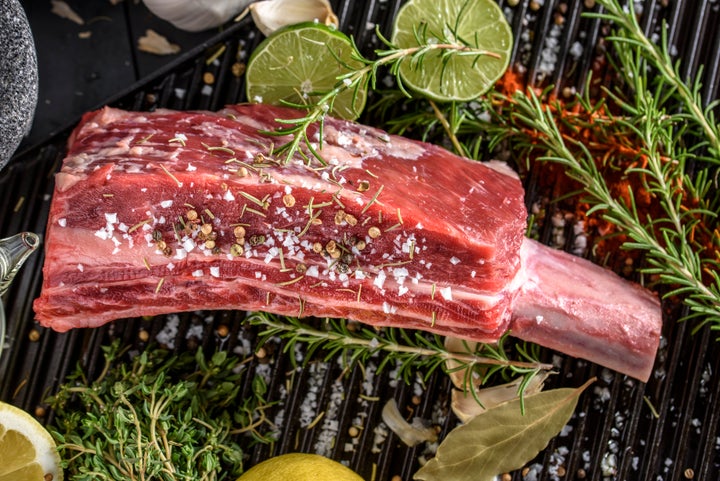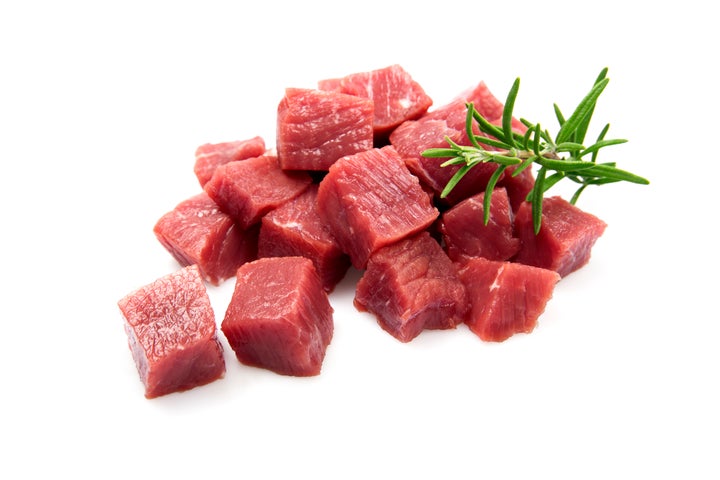
On a cold winter night, few other dishes offer the satisfying comfort of a warm bowl of beef stew. An excellent batch relies on slow-cooked beef that’s rich in flavor and tender in texture, but still has some bite. You can’t get that from any old cut of meat ― and surprisingly, you likely won’t get it from the most prized, expensive cuts of meat.
“You want to use meat that, when simmered in liquid for an extended amount of time, breaks down and becomes tender and flavorful,” explained Sarah Blair, a professionally trained chef and recipe developer.
According to professional chefs, the following six beef cuts (and a wild-card option that’s plant-based) are ideal choices for an unforgettable pot of stew.
Beef Chuck
Overall, beef chuck (either chuck steak or chuck roast), which comes from the lower back and upper shoulder of the cow, got the most votes from the chefs we consulted. Chuck tends to be readily available at grocery stores, which gives it major convenience points.
“Beef chuck is best for stew,” said Arjuna Bull, chef/partner of Luthun in New York City. “It has some fat but not too much, and it also has a good ratio of meat and fat. Beef chuck often has the most consistent meat-to-fat ratio [of beef cuts in general], making it a good, safe choice [for beef stew].”
Brian Theis, the chef and cookbook author behind The Infinite Feast, is also a big proponent of beef chuck in stew. He told us that “chuck is easy to find at most grocers, [it’s] affordable, and [it’s] succulent due to the connective tissues that are marbled into the meat. Chuck is very moist and doesn’t dry out during [slow cooking] because of its release of gelatin.”
Whether you’re using chuck steak or chuck roast, cutting the beef into smaller chunks (1 to 2 inches in length) allows it to cook to perfection in the context of the stew.

Short Ribs
While short ribs aren’t the most tender cut of beef, their slightly tough texture combined with their higher fat content makes them excellent candidates for slow cooking ― a category that definitely includes beef stew.
“The flavor derived from the fat is what makes short ribs great. As I preach to my 4-year-old daughter, ‘fat is flavor,’” said executive chef Jay Rohlfing of Perennial in Towson, Maryland. “I love the muscle structure, and you can [first] sear and braise them with bones in, which will add lots of flavor to the stew.”
Beef Round
Another beef cut that’s easy to find at the supermarket, beef round is “a cut from the back leg, which means it’s tougher and leaner,” explained Gill Boyd, a chef and instructor at the Institute of Culinary Education. “However, it is great for long, slow cooking. Round is usually a [better] price value compared to other cuts and is sold not just in cut cubes, but also as one-to-three-pound steaks.”
If you do purchase a chuck steak, Boyd recommends “cutting round meat into one-inch cubes.”
As Boyd mentioned, beef round cooks nicely in a low-and-slow format. Specifically, the process of stewing works well for this cut because “the slow, moist heat tenderizes it and holds in all of the moisture,” explained Eric Tiglao, chef de cuisine of Taureaux Tavern in Chicago, Illinois.
Oxtail
The meat in the tail of any type of cattle (not just oxen) is known as “oxtail” in the butchering industry. Many grocery stores carry this cut, but if yours doesn’t, a dedicated butcher shop will be a reliable place to find it.
“Oxtail is my favorite cut for stews because it is fatty and full of collagen,” said Alex Guzman, chef/owner of Archer & Goat in New York City. “Oxtail can take a little longer to cook to fall-off-the-bone tenderness, but the meat is so flavorful that it is worth the wait.”
Beef Shin
Beef shin may be harder to find than other cuts of meat; you’ll likely need to look for it at a butcher shop. It’s best cooked with the bone in, which will require you to pull the meat from the bone before serving the stew. However, Zach Preece, executive chef of Josephine in Jacksonville, Florida, told us that beef shin is well worth the effort.
“Beef shin is great to use in a beef stew, particularly because of the bone-to-meat ratio,” Preece said. “Since beef shin is not a muscle that is used [by the cow] as frequently as others, it has less collagen in it, meaning that it does not need to braise as long as other cuts of meat, but it still offers a lot of flavor and melts in your mouth when cooked properly. There’s a good amount of bone marrow in shin, which is an added bonus, due to its health benefits. The bone marrow also gives a rich, heartier flavor to the beef stew.”

‘Stew Meat’ (With A Caveat)
When browsing the meat section of your local supermarket, you may notice packages of beef chunks labeled “stew beef” or “stew meat.” Is “stew meat” a solid bet for beef stew? Some chefs, like Isaac Toups of Toups’ Meatery in New Orleans, aren’t huge fans. “I’m always skeptical of anything labeled stew meat. It is likely a mixture of meats that have different cook times. This is problematic in creating a consistently tender beef stew,” Toups said.
But if you’re on a tight budget (“stew meat” tends to be cheaper than other beef cuts) or just want to save time with pre-chopped and measured meat, you’ll be glad to know that Jesse Jeznach, executive chef of The Irons Restaurant and Bar in Mystic, Connecticut, views stew meat as “a viable option, and because of how the store comes about them, [it] often has a much better price point. Grocery store stew beef is simply the slack cuts from their larger, higher-priced whole cuts that would be wasted if not sold for stew.”
A stew made with “stew meat” may not be the most intensely flavored and richly-textured stew you’ll ever eat, but it can still make for a satisfying weeknight dinner.
Hearty Vegetables And Plant-Based Protein
Plant-based “beef stew?” According to Paul Virant, executive chef and owner of Vie, Vistro Prime, and Gaijin in the Chicago area, it’s very possible to create a stew with the rib-sticking appeal of beef stew in a meat-free manner.
“Mushrooms (especially dried) and beets work really well [in a stew], providing umami and depth,” Virant suggested. “Wheat gluten (aka seitan) is nice because it takes on [the flavors of] anything it’s cooked in. You could also try firm tofu or tempeh, which is made from fermented soybeans.”